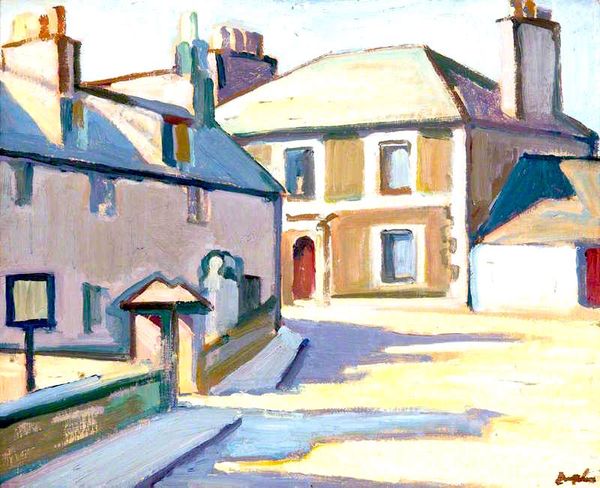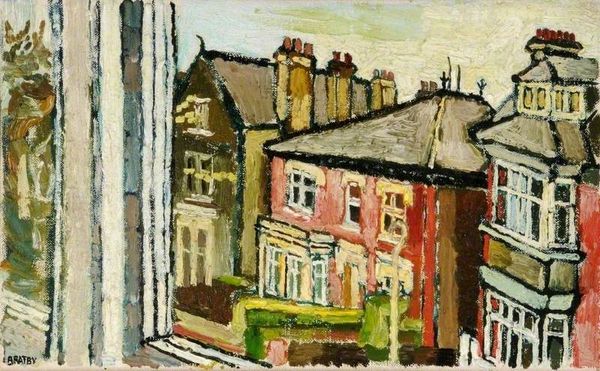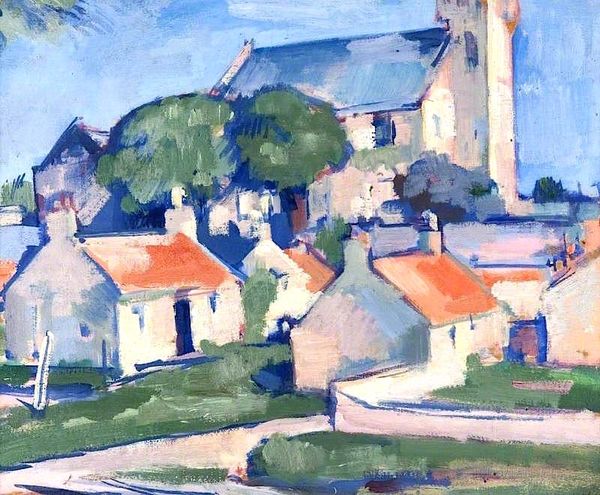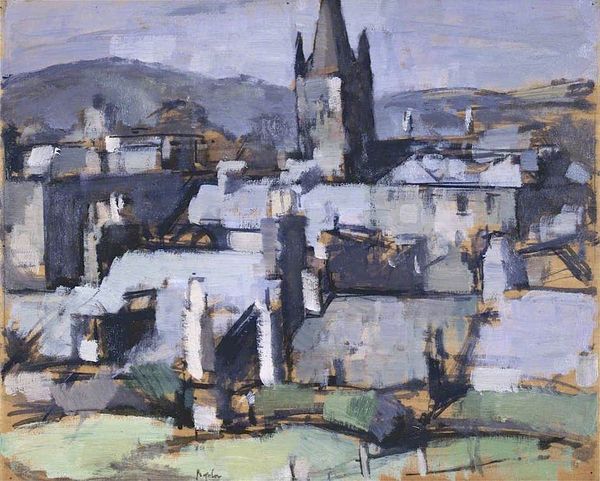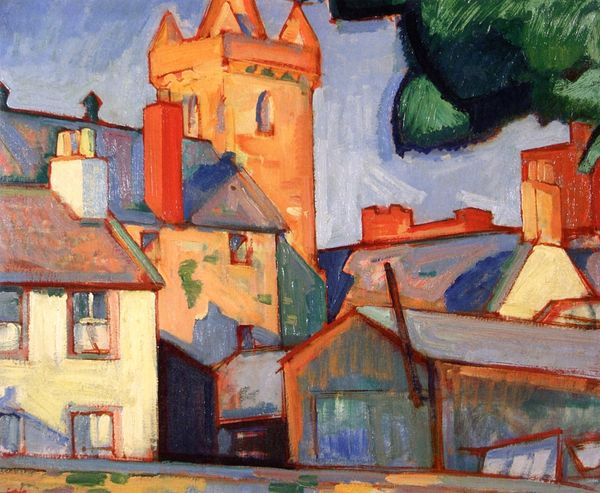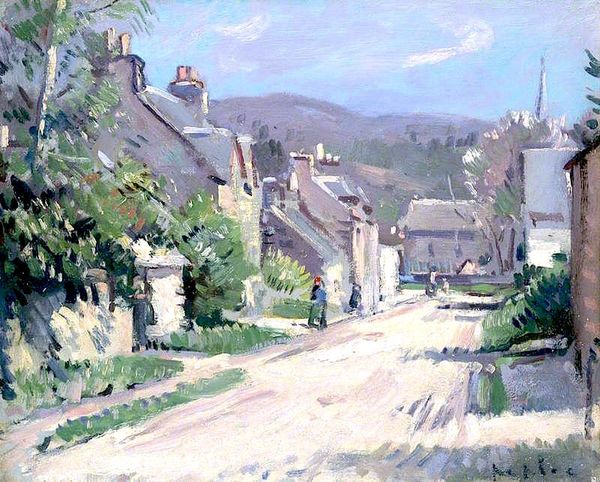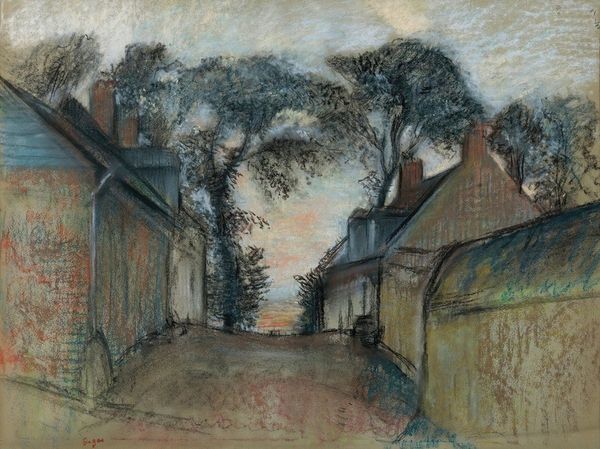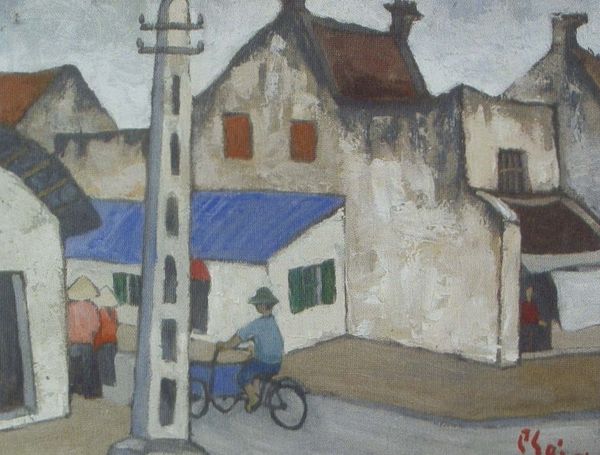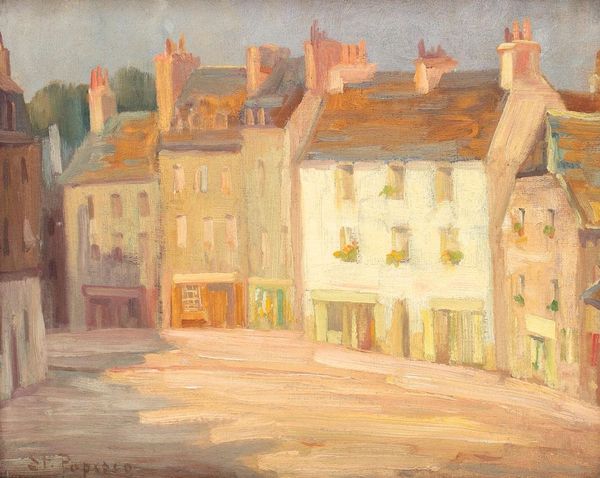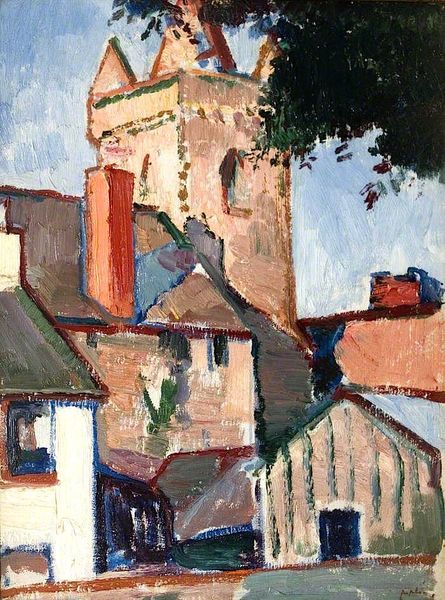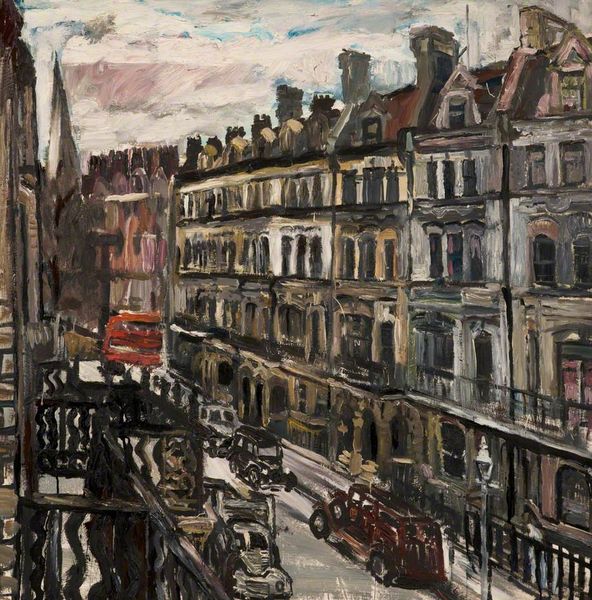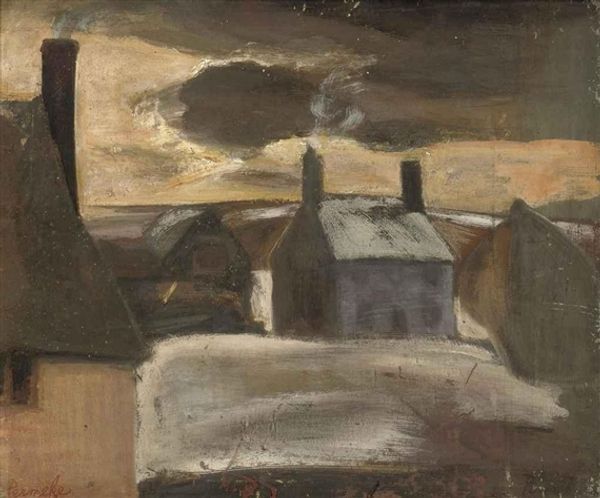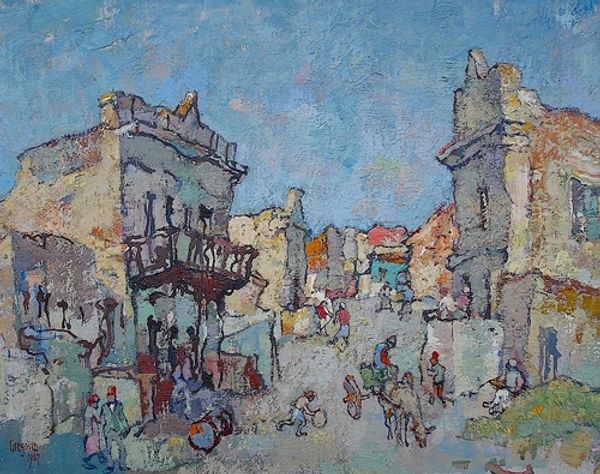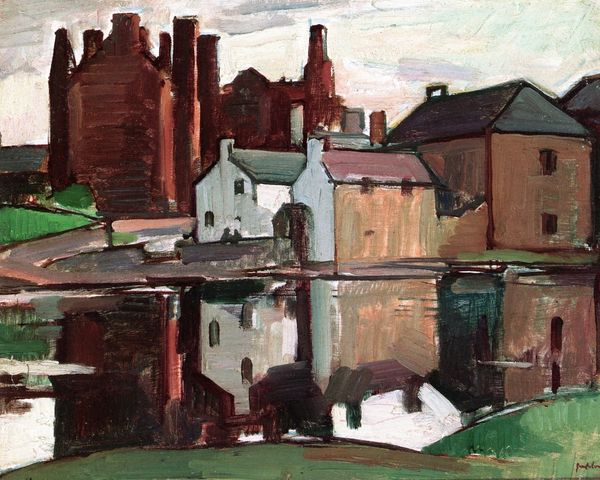
painting, oil-paint
#
sky
#
abstract painting
#
painting
#
oil-paint
#
landscape
#
house
#
impressionist landscape
#
oil painting
#
acrylic on canvas
#
expressionism
#
scottish-colorists
#
cityscape
#
expressionist
Copyright: Public domain
Editor: Samuel Peploe’s “Kirkcudbright,” painted in 1919, uses oil paints to bring this Scottish cityscape to life. I’m immediately struck by the vibrant, almost dreamlike quality of the colors. What do you see when you look at it? Curator: Oh, it whispers stories to me, that little painting! The way Peploe captured the light is magical, wouldn't you say? It's not just what he paints, but how he paints it – thick strokes that vibrate with energy. And look how he turns a simple row of houses into something monumental, something joyous. It’s almost like he's found the secret rhythm of Kirkcudbright. Does it feel that way to you? Editor: Definitely. It feels less like a literal depiction and more like an emotional impression of the place. Is that part of why he's considered a Scottish Colourist? Curator: Precisely! These artists, like Peploe, saw colour not just as representation but as a powerful expressive tool. He’s playing with a Fauvist boldness, right? Like he is releasing these pigments onto the canvas with a feeling of glee and a love of pure sensation. Notice how those blues in the sky practically dance against the creamy pinks of the buildings, making it shimmer! It seems a pretty good example to think of Impressionism heading off towards a love of structure. Editor: That's so insightful! I didn't fully appreciate how the colour contributes to the feeling of movement. Curator: That's the delightful secret. Art reveals itself layer by layer. Editor: Well, I’m going to see Scottish Colourists in a completely new light from now on! Thanks so much for that. Curator: My pleasure. It seems that every new looking at something helps one get more pleasure from it!
Comments
No comments
Be the first to comment and join the conversation on the ultimate creative platform.
